Hi there! This time I tried sewing something totally new for me and I can tell you – my Bernina serger L460 made the job a whole lot easier! I live in northern Norway and it tends to get quite cold during the winter. We live in an area with great cross-country skiing opportunities and are often outside during the cold months. We have a very active dog who usually runs around a lot and keeps warm just by being active.
But Sara isn’t a polar dog, and especially her belly is pretty naked and is very exposed to snow and ice, especially while she’s running through deep snow. And especially when she has to be on a leash or we take a break, there’s no way that she can keep warm enough. The solution to this problem was pretty simple: Sewing a dog coat! A lot of dog coats on the market only cover the back, but we wanted something that covers as much of the belly as possible, too, without making it difficult for her to move.
When choosing the fabric I ended up with softshell with fleece on the inside. That way the coat has an extra warm layer on the inside and a smooth surface on the outside, keeping wind, snow, and rain away. This kind of fabric isn’t too expensive, it has a little bit of give to it and sewing with it is very easy. However, the softshell and the fleece do attract a lot of dog hair – I’m sorry about all the dog hair on my pics – I couldn’t have photoshopped all of them out! =D
The only other materials I needed was some velcro (I used 2 cm wide velcro, since that was what I had, but wider velcro might be even better!) and some nylon webbing, the kind that might be used for messenger bags. You might be able to only use velcro, too, but I find it easier to adjust the dog coat with the added straps.
I didn’t use a pattern since I knew pretty well what I wanted to make – and every dog is so different that standard patterns might need a lot of adjusting anyway. I started by measuring my dog from the neck to her back, calculating the length of the dog coat. I also measured around our dog’s belly to calculate how long the flaps around her stomach should be, and around her neck to get an idea of how long the straps around her neck should be. Using these measurements I cut a rough pattern out of paper, similar to the shape below:
The reason why I chose a shape like this is simple: I wanted to make everything out of one single piece to avoid any unneccessary seams that could irritate our dog while wearing the coat. I pinned the pattern around my dog, checking the fit. The changes you need to make might vary widely, but I, as an example, had to cut the curve around her back legs wider to ensure that she can run properly and I had to make the flaps around her neck less curved, since i had some extra fabric bulking up around the outer curve. Make sure that the flaps around the neck and the stomach overlap enough!
After cutting the shape out of my real fabric I had a last fitting on my dog to ensure that everything was correct. Softshell doesn’t fray – but who wants totally raw edges? I could have bound the edges with bias tape, but that has two disadvantages: on the one hand it ca be difficult to get around the curves without any bulk, on the other hand it adds more bulk to the edges, which might irritate your dog. My Bernina L 460 serger made things very, very easy for me: I simply serged around the whole coat, starting and stopping at one of the belly flaps. That way I got very clean edges and a professional finish without adding any extra bulk. Don’t the serged edges look really nice?
Now the only thing that was left was adding the straps and the velcro to be able to adjust and fasten the dog coat easily. I tried the dog coat on and put pins where I wanted the different velcro parts to start and end. I chose to sew on pretty long strips of velcro to ensure that the velcro doesn’t open up, even when our dog is running through snow. I chose to sew the “hard” part of the velcro to the neck flap that is hidden underneath the other. That way I knew that the hard part of the velcro would never touch the dog’s skin, even if the two velcro parts wouldn’t overlap totally. On the stomach flaps I chose to sew the soft part of the velcro to the inner flap and the hard part of the velcro to the straps. The velcro side of the straps will always be totally hidden, while the soft part might be partly visible while wearing the dog coat, since I sewed on extra long velcro straps to make it easier to adjust the coat as needed.
I chose to sew the velcro to my webbing first, after that I attached all the velcro straps and the webbing to the softshell fabric itself. I took care to sew right along the edge of the velcro, sewing forth and back around the corners to strengthen the seams. I also chose to sew twice around the webbing to make sure the seams hold up.
We’ve already tested the dog coat a couple of times and our dog doesn’t seem to mind wearing it at all, which is a good sign. The velcro does its job holding the dog coat together and Sara is shivering less when we’re outside for many hours. Definitely a sewing project I can recommend – especially because it’s quick to make, way cheaper than a store-bought version and can be adjusted better to your dog than a standard version.
 BERNINA Corporate Blog -
BERNINA Corporate Blog -



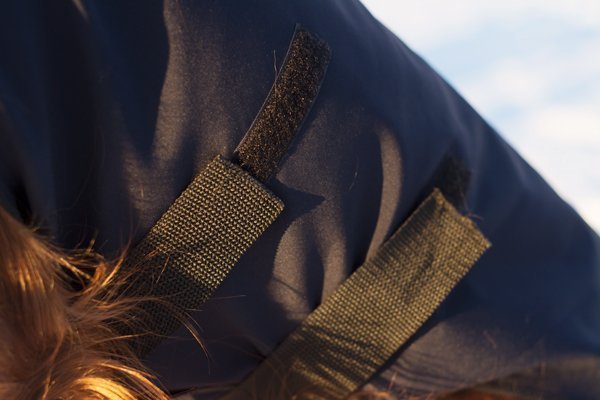


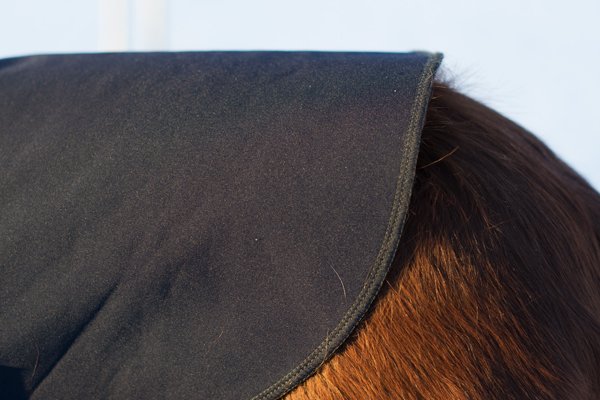
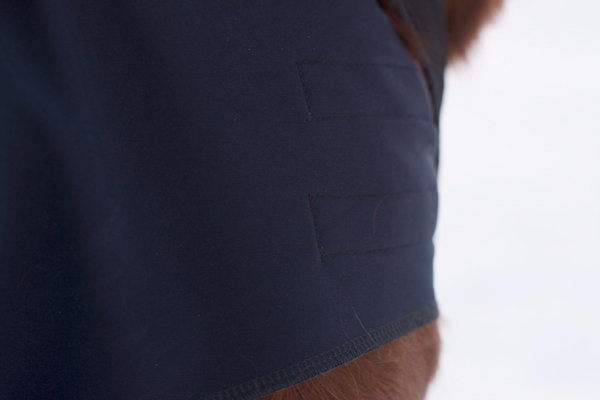
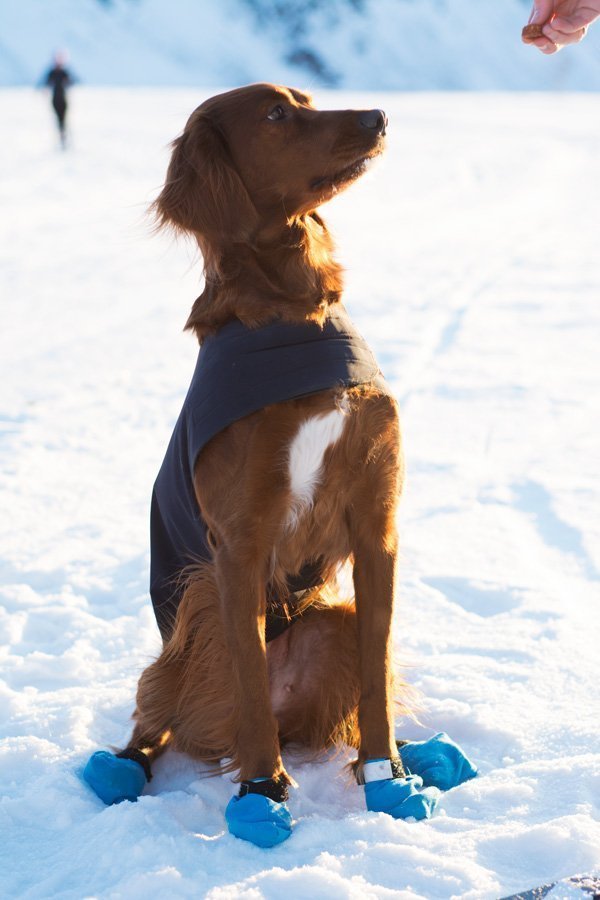

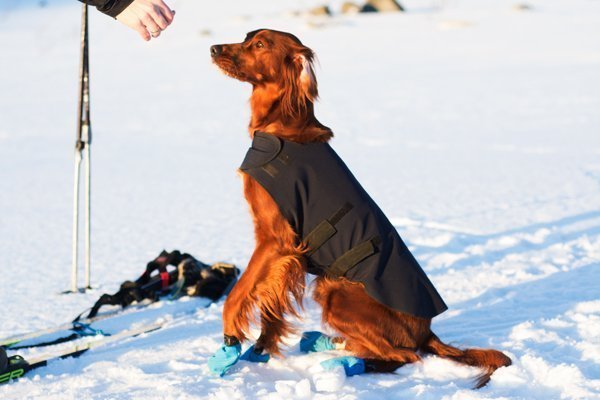
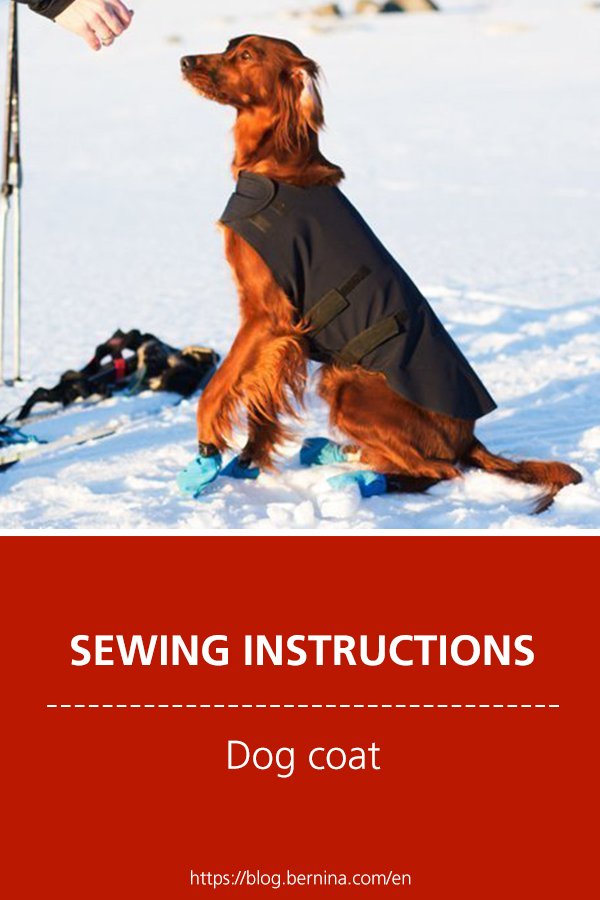

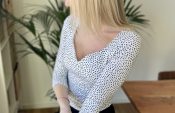


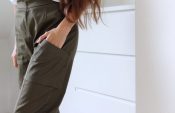
This is exactly what I have been looking for! My big old Golden Granddog was shaved down by a groomer in June and it’s clear 6 months later that his fur will never grow back. The weather is chilly now (December) and I can only imagine that Sammy is cold too. I’m going to use an old wool plaid throw that has been laying in the bottom of a trunk. Perfect! Thank you, Marie!